Daily Lost Investment: Every day that GLBI is not in action Canada is losing $525,983,561.60 in poverty reduction.
Review: PwD and the 2022-23 Canada Federal Budget
- Joseph
- Site Admin

- Posts: 143
- Joined: Fri Apr 01, 2022 1:42 pm
- Feelings on BI: I founded GLBI.CA So YES!
- Contact:
Review: PwD and the 2022-23 Canada Federal Budget
Published: April 10, 2022
Page 11
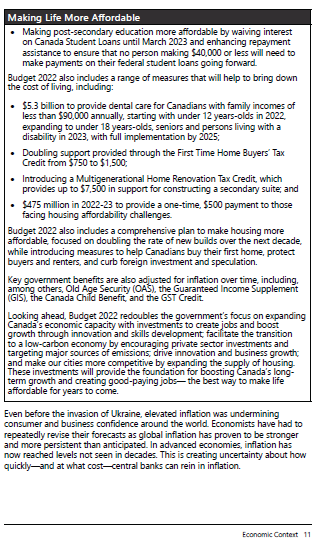
Page 30

Page 38
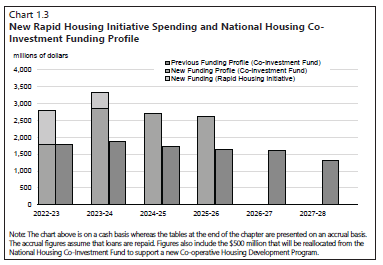
Page 41
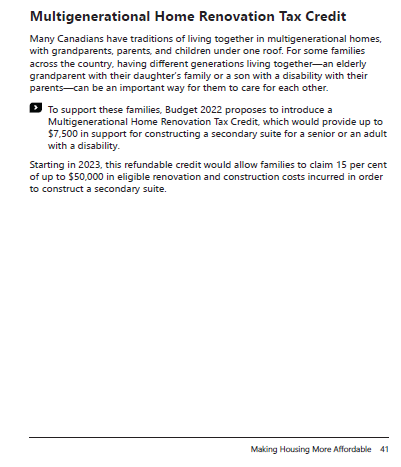
Page 43
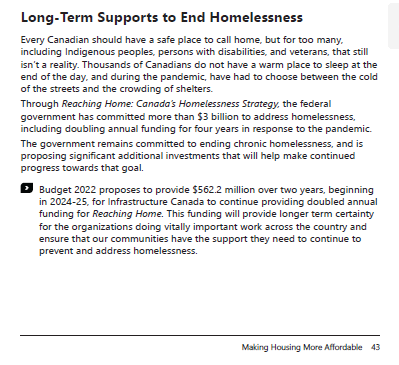
Page 49
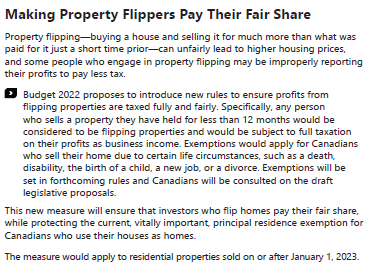
Page 113
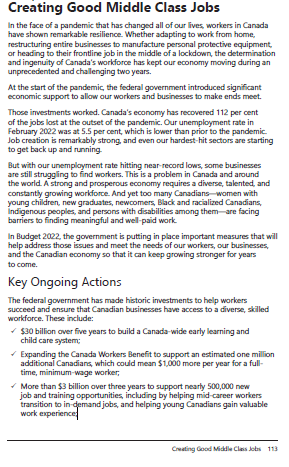
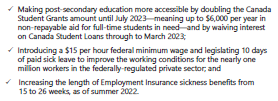
Page 121
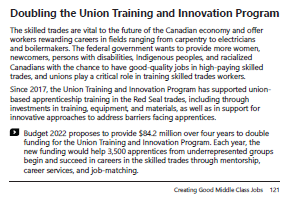
Page 122
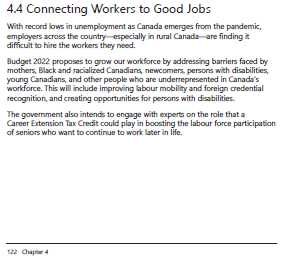
Pages 124 & 125
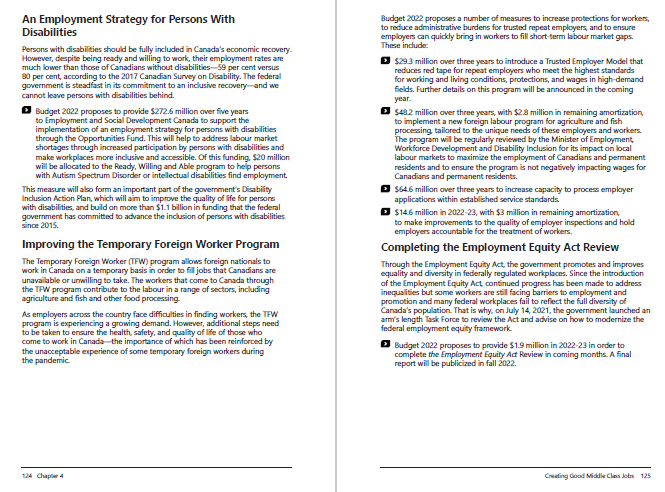
Page 127

Page 152
Dental Care for Canadians

Page 156


Pages 168 & 169
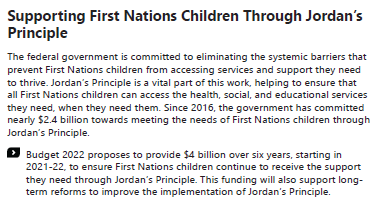
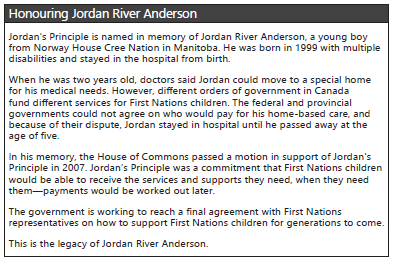
Page 183
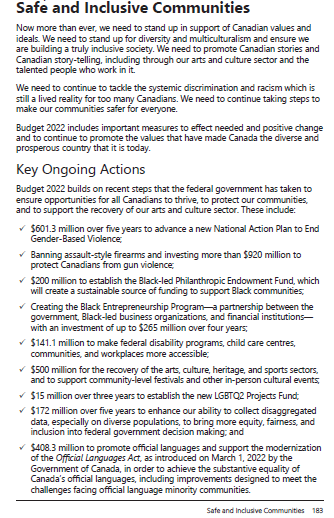
Page 188
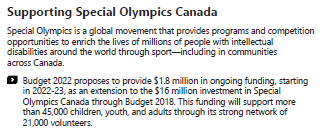
Page 190
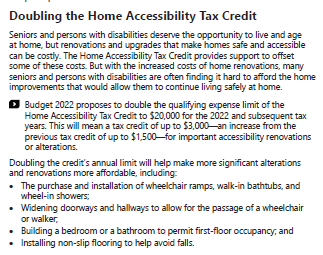
Budget 2022 Review - Disability Inclusion and Exclusion at it's best - GLBI.CA
THE ACTUAL REVIEW IS BELOW - THIS IS THE REFERENCES FIRST
USE THIS LINK FOR SHARING
( REFERENCE POST FOR REVIEW & QUOTES BELOW)
My apologizes for the layout but this is my first review on the forum
Page 11
Budget 2022 also includes a range of measures that will help to bring down
the cost of living, including:
$5.3 billion to provide dental care for Canadians with family incomes of
less than $90,000 annually, starting with under 12 years-olds in 2022,
expanding to under 18 years-olds, seniors and persons living with a
disability in 2023, with full implementation by 2025;

Page 30
Note: Participation rates for 2021, except for Canadians
with disabilities (2017). Recent immigrants are those
who came to Canada in the last five years. Indigenous
Canadians only includes those living off reserve and in
the provinces. 25-54 years of age for all.
Sources: Statistics Canada; Department of Finance
Canada calculations.

Page 38
Over the last five years, the National Housing Co-Investment Fund has supported the construction and repair of 108,000 housing units for the most vulnerable Canadians. Projects like shelters, homes for seniors and persons with disabilities, and supportive housing account for 75 per cent of units committed to so far, with demand for those units exceeding supply. To protect housing affordability tomorrow, the government is accelerating its investments today.Budget 2022 proposes to advance $2.9 billion in funding, on a cash basis, under the National Housing Co-Investment Fund, so that all remaining funds will be spent by 2025-26. This will accelerate the creation of up to 4,300 new units and the repair of up to 17,800 units for the Canadians who need them most.
Taking lessons from the Rapid Housing Initiative, the National Housing Co-Investment Fund will be made both more flexible and easier to access,
including with more generous contributions and faster approvals.

Page 41
Multigenerational Home Renovation Tax Credit
Many Canadians have traditions of living together in multigenerational homes, with grandparents, parents, and children under one roof. For some families across the country, having different generations living together—an elderly grandparent with their daughter’s family or a son with a disability with their parents—can be an important way for them to care for each other.To support these families, Budget 2022 proposes to introduce a Multigenerational Home Renovation Tax Credit, which would provide up to
$7,500 in support for constructing a secondary suite for a senior or an adult with a disability.
Starting in 2023, this refundable credit would allow families to claim 15 per cent of up to $50,000 in eligible renovation and construction costs incurred in order to construct a secondary suite.

Page 43
Long-Term Supports to End Homelessness
Every Canadian should have a safe place to call home, but for too many, including Indigenous peoples, persons with disabilities, and veterans, that still isn’t a reality. Thousands of Canadians do not have a warm place to sleep at the end of the day, and during the pandemic, have had to choose between the cold of the streets and the crowding of shelters.Through Reaching Home: Canada’s Homelessness Strategy, the federal government has committed more than $3 billion to address homelessness, including doubling annual funding for four years in response to the pandemic. The government remains committed to ending chronic homelessness, and is proposing significant additional investments that will help make continued progress towards that goal.
Budget 2022 proposes to provide $562.2 million over two years, beginning in 2024-25, for Infrastructure Canada to continue providing doubled annual
funding for Reaching Home. This funding will provide longer term certainty for the organizations doing vitally important work across the country and
ensure that our communities have the support they need to continue to prevent and address homelessness.

Page 49
Making Property Flippers Pay Their Fair Share
Property flipping—buying a house and selling it for much more than what was paid for it just a short time prior—can unfairly lead to higher housing prices, and some people who engage in property flipping may be improperly reporting their profits to pay less tax.Budget 2022 proposes to introduce new rules to ensure profits from flipping properties are taxed fully and fairly. Specifically, any person
who sells a property they have held for less than 12 months would be considered to be flipping properties and would be subject to full taxation
on their profits as business income. Exemptions would apply for Canadians who sell their home due to certain life circumstances, such as a death,
disability, the birth of a child, a new job, or a divorce. Exemptions will be set in forthcoming rules and Canadians will be consulted on the draft
legislative proposals.
This new measure will ensure that investors who flip homes pay their fair share, while protecting the current, vitally important, principal residence exemption for Canadians who use their houses as homes.
The measure would apply to residential properties sold on or after January 1, 2023.

Page 113
Creating Good Middle Class Jobs
In the face of a pandemic that has changed all of our lives, workers in Canada have shown remarkable resilience. Whether adapting to work from home, restructuring entire businesses to manufacture personal protective equipment, or heading to their frontline job in the middle of a lockdown, the determination and ingenuity of Canada’s workforce has kept our economy moving during an unprecedented and challenging two years.
At the start of the pandemic, the federal government introduced significant economic support to allow our workers and businesses to make ends meet.
Those investments worked. Canada’s economy has recovered 112 per cent of the jobs lost at the outset of the pandemic. Our unemployment rate in
February 2022 was at 5.5 per cent, which is lower than prior to the pandemic. Job creation is remarkably strong, and even our hardest-hit sectors are starting to get back up and running.
But with our unemployment rate hitting near-record lows, some businesses are still struggling to find workers. This is a problem in Canada and around the world. A strong and prosperous economy requires a diverse, talented, and constantly growing workforce. And yet too many Canadians—women with young children, new graduates, newcomers, Black and racialized Canadians, Indigenous peoples, and persons with disabilities among them—are facing barriers to finding meaningful and well-paid work.
In Budget 2022, the government is putting in place important measures that will help address those issues and meet the needs of our workers, our businesses, and the Canadian economy so that it can keep growing stronger for years to come.
Key Ongoing Actions
The federal government has made historic investments to help workers succeed and ensure that Canadian businesses have access to a diverse, skilled workforce. These include:
- $30 billion over five years to build a Canada-wide early learning and child care system;
- Expanding the Canada Workers Benefit to support an estimated one million additional Canadians, which could mean $1,000 more per year for a fulltime, minimum-wage worker;
- More than $3 billion over three years to support nearly 500,000 new job and training opportunities, including by helping mid-career workers
transition to in-demand jobs, and helping young Canadians gain valuable work experience;
- Making post-secondary education more accessible by doubling the Canada Student Grants amount until July 2023—meaning up to $6,000 per year in non-repayable aid for full-time students in need—and by waiving interest on Canada Student Loans through to March 2023;
- Introducing a $15 per hour federal minimum wage and legislating 10 days of paid sick leave to improve the working conditions for the nearly one million workers in the federally-regulated private sector; and
- Increasing the length of Employment Insurance sickness benefits from 15 to 26 weeks, as of summer 2022.


Page 121
Doubling the Union Training and Innovation Program
The skilled trades are vital to the future of the Canadian economy and offer workers rewarding careers in fields ranging from carpentry to electricians and boilermakers. The federal government wants to provide more women, newcomers, persons with disabilities, Indigenous peoples, and racialized Canadians with the chance to have good-quality jobs in high-paying skilled trades, and unions play a critical role in training skilled trades workers.
Since 2017, the Union Training and Innovation Program has supported unionbased apprenticeship training in the Red Seal trades, including through
investments in training, equipment, and materials, as well as in support for innovative approaches to address barriers facing apprentices.Budget 2022 proposes to provide $84.2 million over four years to double funding for the Union Training and Innovation Program. Each year, the new funding would help 3,500 apprentices from underrepresented groups begin and succeed in careers in the skilled trades through mentorship, career services, and job-matching.

Page 122
Connecting Workers to Good Jobs
With record lows in unemployment as Canada emerges from the pandemic, employers across the country—especially in rural Canada—are finding it
difficult to hire the workers they need.
Budget 2022 proposes to grow our workforce by addressing barriers faced by mothers, Black and racialized Canadians, newcomers, persons with disabilities, young Canadians, and other people who are underrepresented in Canada’s workforce. This will include improving labour mobility and foreign credential recognition, and creating opportunities for persons with disabilities.
The government also intends to engage with experts on the role that a Career Extension Tax Credit could play in boosting the labour force participation of seniors who want to continue to work later in life.

Pages 124 & 125
Note: 12 out of 45 mentions of the words Disability and Disabilities or 26% of the attention to it in Budget 2022 happens on these 2 pages.
An Employment Strategy for Persons With Disabilities
Persons with disabilities should be fully included in Canada’s economic recovery. However, despite being ready and willing to work, their employment rates are much lower than those of Canadians without disabilities—59 per cent versus 80 per cent, according to the 2017 Canadian Survey on Disability. The federal government is steadfast in its commitment to an inclusive recovery—and we cannot leave persons with disabilities behind.
Budget 2022 proposes to provide $272.6 million over five years to Employment and Social Development Canada to support the implementation of an employment strategy for persons with disabilities through the Opportunities Fund. This will help to address labour market shortages through increased participation by persons with disabilities and make workplaces more inclusive and accessible. Of this funding, $20 million will be allocated to the Ready, Willing and Able program to help persons with Autism Spectrum Disorder or intellectual disabilities find employment.
This measure will also form an important part of the government’s Disability Inclusion Action Plan, which will aim to improve the quality of life for persons with disabilities, and build on more than $1.1 billion in funding that the federal government has committed to advance the inclusion of persons with disabilities since 2015.
Improving the Temporary Foreign Worker Program
The Temporary Foreign Worker (TFW) program allows foreign nationals to work in Canada on a temporary basis in order to fill jobs that Canadians are unavailable or unwilling to take. The workers that come to Canada through the TFW program contribute to the labour in a range of sectors, including agriculture and fish and other food processing.
As employers across the country face difficulties in finding workers, the TFW program is experiencing a growing demand. However, additional steps need to be taken to ensure the health, safety, and quality of life of those who come to work in Canada—the importance of which has been reinforced by the unacceptable experience of some temporary foreign workers during the pandemic.
Budget 2022 proposes a number of measures to increase protections for workers, to reduce administrative burdens for trusted repeat employers, and to ensure employers can quickly bring in workers to fill short-term labour market gaps. These include:
$29.3 million over three years to introduce a Trusted Employer Model that reduces red tape for repeat employers who meet the highest standards for working and living conditions, protections, and wages in high-demand fields. Further details on this program will be announced in the coming year.
$48.2 million over three years, with $2.8 million in remaining amortization, to implement a new foreign labour program for agriculture and fish processing, tailored to the unique needs of these employers and workers. The program will be regularly reviewed by the Minister of Employment, Workforce Development and Disability Inclusion for its impact on local labour markets to maximize the employment of Canadians and permanent residents and to ensure the program is not negatively impacting wages for Canadians and permanent residents.
$64.6 million over three years to increase capacity to process employer applications within established service standards.
$14.6 million in 2022-23, with $3 million in remaining amortization, to make improvements to the quality of employer inspections and hold employers accountable for the treatment of workers.
Completing the Employment Equity Act Review
Through the Employment Equity Act, the government promotes and improves equality and diversity in federally regulated workplaces. Since the introduction of the Employment Equity Act, continued progress has been made to address inequalities but some workers are still facing barriers to employment and promotion and many federal workplaces fail to reflect the full diversity of Canada’s population. That is why, on July 14, 2021, the government launched an arm’s length Task Force to review the Act and advise on how to modernize the federal employment equity framework.
Budget 2022 proposes to provide $1.9 million in 2022-23 in order to complete the Employment Equity Act Review in coming months. A final
report will be publicized in fall 2022.

Page 127

Page 152
Dental Care for Canadians
Seeing a dentist is important for our health, but can be expensive. A third of Canadians do not have dental insurance, and in 2018, more than one in five Canadians reported avoiding dental care because of the cost.
Budget 2022 proposes to provide funding of $5.3 billion over five years, starting in 2022-23, and $1.7 billion ongoing, to Health Canada to provide dental care for Canadians. This will start with under 12-year-olds in 2022, and then expand to under 18-year-olds, seniors, and persons living with a disability in 2023, with full implementation by 2025. The program would be restricted to families with an income of less than $90,000 annually, with no co-pays for those under $70,000 annually in income.

Page 156
Budget 2021 Investments in Mental Health
Budget 2021 provided significant funding for mental health care, including:
- $100 million over three years, starting in 2021-22, to support the mental health of Canadians most affected by COVID-19;
- $140 million over five years, starting in 2021-22, to cover the mental health care costs of veterans with post-traumatic stress disorder (PTSD), depressive, or anxiety disorders while their disability benefit application is being processed;
- $62 million in 2021-22 for the Wellness Together Canada portal;
- $45 million over two years, starting in 2021-22, to develop national standards for mental health care;
- $598 million over three years, starting in 2021-22, to support distinctionsbased mental health and wellness strategies co-developed with Indigenous
partners; and
- $50 million over two years, starting in 2021-22, to help those experiencing
PTSD due to the pandemic.


Pages 168 & 169
Supporting First Nations Children Through Jordan’s Principle
The federal government is committed to eliminating the systemic barriers that prevent First Nations children from accessing services and support they need to thrive. Jordan’s Principle is a vital part of this work, helping to ensure that all First Nations children can access the health, social, and educational services they need, when they need them. Since 2016, the government has committed nearly $2.4 billion towards meeting the needs of First Nations children through Jordan’s Principle.
Budget 2022 proposes to provide $4 billion over six years, starting in 2021-22, to ensure First Nations children continue to receive the support
they need through Jordan’s Principle. This funding will also support longterm reforms to improve the implementation of Jordan’s Principle.
Honouring Jordan River AndersonJordan's Principle is named in memory of Jordan River Anderson, a young boy from Norway House Cree Nation in Manitoba. He was born in 1999 with multiple disabilities and stayed in the hospital from birth.
When he was two years old, doctors said Jordan could move to a special home for his medical needs. However, different orders of government in Canada fund different services for First Nations children. The federal and provincial governments could not agree on who would pay for his home-based care, and because of their dispute, Jordan stayed in hospital until he passed away at the age of five.
In his memory, the House of Commons passed a motion in support of Jordan's Principle in 2007. Jordan’s Principle was a commitment that First Nations children would be able to receive the services and supports they need, when they need them—payments would be worked out later.
The government is working to reach a final agreement with First Nations representatives on how to support First Nations children for generations to come.
This is the legacy of Jordan River Anderson.


Page 183
Safe and Inclusive Communities
Now more than ever, we need to stand up in support of Canadian values and ideals. We need to stand up for diversity and multiculturalism and ensure we are building a truly inclusive society. We need to promote Canadian stories and Canadian story-telling, including through our arts and culture sector and the talented people who work in it.
We need to continue to tackle the systemic discrimination and racism which is still a lived reality for too many Canadians. We need to continue taking steps to make our communities safer for everyone.
Budget 2022 includes important measures to effect needed and positive change and to continue to promote the values that have made Canada the diverse and prosperous country that it is today.
Key Ongoing Actions
Budget 2022 builds on recent steps that the federal government has taken to ensure opportunities for all Canadians to thrive, to protect our communities, and to support the recovery of our arts and culture sector. These include:
- $601.3 million over five years to advance a new National Action Plan to End Gender-Based Violence;
- Banning assault-style firearms and investing more than $920 million to protect Canadians from gun violence;
- $200 million to establish the Black-led Philanthropic Endowment Fund, which will create a sustainable source of funding to support Black communities;
- Creating the Black Entrepreneurship Program—a partnership between the government, Black-led business organizations, and financial institutions with an investment of up to $265 million over four years;
- $141.1 million to make federal disability programs, child care centres, communities, and workplaces more accessible;
- $500 million for the recovery of the arts, culture, heritage, and sports sectors, and to support community-level festivals and other in-person cultural events;
- $15 million over three years to establish the new LGBTQ2 Projects Fund;
- $172 million over five years to enhance our ability to collect disaggregated data, especially on diverse populations, to bring more equity, fairness, and inclusion into federal government decision making; and
- $408.3 million to promote official languages and support the modernization of the Official Languages Act, as introduced on March 1, 2022 by the
Government of Canada, in order to achieve the substantive equality of Canada’s official languages, including improvements designed to meet the challenges facing official language minority communities.

Page 188
Supporting Special Olympics Canada
Special Olympics is a global movement that provides programs and competition opportunities to enrich the lives of millions of people with intellectual disabilities around the world through sport—including in communities across Canada.
Budget 2022 proposes to provide $1.8 million in ongoing funding, starting in 2022-23, as an extension to the $16 million investment in Special
Olympics Canada through Budget 2018. This funding will support more than 45,000 children, youth, and adults through its strong network of 21,000 volunteers.

Page 190
Doubling the Home Accessibility Tax Credit
Seniors and persons with disabilities deserve the opportunity to live and age at home, but renovations and upgrades that make homes safe and accessible can be costly. The Home Accessibility Tax Credit provides support to offset some of these costs. But with the increased costs of home renovations, many seniors and persons with disabilities are often finding it hard to afford the home improvements that would allow them to continue living safely at home.
Budget 2022 proposes to double the qualifying expense limit of the Home Accessibility Tax Credit to $20,000 for the 2022 and subsequent tax years. This will mean a tax credit of up to $3,000—an increase from the previous tax credit of up to $1,500—for important accessibility renovations or alterations.
Doubling the credit’s annual limit will help make more significant alterations and renovations more affordable, including:
- The purchase and installation of wheelchair ramps, walk-in bathtubs, and wheel-in showers;
- Widening doorways and hallways to allow for the passage of a wheelchair or walker;
- Building a bedroom or a bathroom to permit first-floor occupancy; and
- Installing non-slip flooring to help avoid falls.

END OF QUOTATIONS OF BUDGET
~~ End Notes From GLBI.CA
There are a few more mentions but they are just fine print or budget lines that are normally expected. They will be filled in after.
- Joseph
- Site Admin

- Posts: 143
- Joined: Fri Apr 01, 2022 1:42 pm
- Feelings on BI: I founded GLBI.CA So YES!
- Contact:
Summary Review
Dental Care
$5.3 billion to provide dental care for Canadians with family incomes of less than $90,000 annually, starting with under 12 years-olds in 2022,
expanding to under 18 years-olds, seniors and persons living with a disability in 2023, with full implementation by 2025
This dental care program won't even come into effect until at least 2023 for the disabled. Without full implementation until 2025 it could be reasonably objective to think that all provinces are going to sign deals for this before then. Look at how long Child Day Care took.
Housing
National Housing Co-Investment Fund
$2.9 billion in funding, on a cash basis, under the National Housing Co-Investment Fund
...
This will accelerate the creation of up to 4,300 new units and the repair of up to 17,800 units for the Canadians who need them most.
With $2.9 billion being allocated to construct or repair 22,100 units in 3 years it comes in at an astounding price tag of about $131,221.72 per unit or about 10 years of a GLBI cost while helping 0.5% of the population.
Doubling the Home Accessibility Tax Credit
Budget 2022 proposes to double the qualifying expense limit of the Home Accessibility Tax Credit to $20,000 for the 2022 and subsequent tax years. This will mean a tax credit of up to $3,000—an increase from the previous tax credit of up to $1,500—for important accessibility renovations or alterations.
Multigenerational Home Renovation Tax Credit
To support these families, Budget 2022 proposes to introduce a Multigenerational Home Renovation Tax Credit, which would provide up to
$7,500 in support for constructing a secondary suite for a senior or an adult with a disability.
Starting in 2023, this refundable credit would allow families to claim 15 per cent of up to $50,000 in eligible renovation and construction costs incurred in order to construct a secondary suite.
Only $5 million was allocated in the 2022-23 Budget fiscal year for the Multigenerational Home Renovation Tax Credit making this the cheapest promise in the budget for those with Disabilities. Not only is this a minor amount compared to a budget of $452.3 Billion ( 0.00105% ) but they only get 15% of their investment into the home back as a tax credit. This will push families with Disabilities even farther into poverty as most can't wait until tax time for rebates.
Ending Homelessness
Budget 2022 proposes to provide $562.2 million over two years, beginning in 2024-25, for Infrastructure Canada to continue providing doubled annual funding for Reaching Home. This funding will provide longer term certainty for the organizations doing vitally important work across the country and ensure that our communities have the support they need to continue to prevent and address homelessness.
These supports won't even start having a cash flow until 2024-2025 and 2025-2026 which will be $281 million each fiscal year. Until that time, the budget says zero dollars. This program will not be funded for at least 2 years, making it not a fiscal responsibility of 2022-23.

Property Flipping Tax
Budget 2022 proposes to introduce new rules to ensure profits from flipping properties are taxed fully and fairly. Specifically, any person
who sells a property they have held for less than 12 months would be considered to be flipping properties and would be subject to full taxation
on their profits as business income. Exemptions would apply for Canadians who sell their home due to certain life circumstances, such as a death, disability, the birth of a child, a new job, or a divorce. Exemptions will be set in forthcoming rules and Canadians will be consulted on the draft legislative proposals.
But what happens if the person who is Disabled lives with the Home Owner because they are a family member?
This Property Flippers Tax could negatively affect Disabled individuals, especially if their rental home is sold before this tax kicks in.
Employment
Doubling the Union Training and Innovation Program
Budget 2022 proposes to provide $84.2 million over four years to double funding for the Union Training and Innovation Program. Each year, the new funding would help 3,500 apprentices from underrepresented groups begin and succeed in careers in the skilled trades through mentorship, career services, and job-matching.
Folks, that is $6,014.28 per worker per year or $3.53 per hour IF they get 1700 hours a year. This of course is not guaranteeing they are going to get this if they are disabled. That's IF they are disabled and can qualify to train for a Red Seal trade. This program although helping 3,500 people a year, is coming in at a cost that is so low, how is it really helping jobs?
Opportunities Fund
Budget 2022 proposes to provide $272.6 million over five years to Employment and Social Development Canada to support the implementation of an employment strategy for persons with disabilities through the Opportunities Fund. This will help to address labour market shortages through increased participation by persons with disabilities and make workplaces more inclusive and accessible. Of this funding, $20 million will be allocated to the Ready, Willing and Able program to help persons with Autism Spectrum Disorder or intellectual disabilities find employment.
This is where the Federal Budget mentions the words Disabilities the most in the entire document. Of course, it is about Jobs and Employment Training rather than about affordability, housing or basic human needs. In the end, it's only $54.4 million per year, broken up too:
2022-23: $13 million after $26 million in reallocation of funding
2023-24: $65 million
2023-24: $65 million
2023-24: $65 million
2023-24: $65 million
$20 million of which, and it doesn't say how that is broken down will go to Autism Spectrum Disorder or intellectual disabled individuals getting help with employment but it won't go to them, it will go to the "Ready Willing and Able" organization to deal with it.

Budget 2021 Investments in Mental Health
Budget 2021 provided significant funding for mental health care, including:
- $140 million over five years, starting in 2021-22, to cover the mental health care costs of veterans with post-traumatic stress disorder (PTSD), depressive, or anxiety disorders while their disability benefit application is being processed
Supporting First Nations Children Through Jordan’s Principle
Jordan's Principle is named in memory of Jordan River Anderson, a young boy from Norway House Cree Nation in Manitoba. He was born in 1999 with multiple disabilities and stayed in the hospital from birth.
When he was two years old, doctors said Jordan could move to a special home for his medical needs. However, different orders of government in Canada fund different services for First Nations children. The federal and provincial governments could not agree on who would pay for his home-based care, and because of their dispute, Jordan stayed in hospital until he passed away at the age of five.
In his memory, the House of Commons passed a motion in support of Jordan's Principle in 2007. Jordan’s Principle was a commitment that First Nations children would be able to receive the services and supports they need, when they need them—payments would be worked out later.
The government is working to reach a final agreement with First Nations representatives on how to support First Nations children for generations to come.
This is the legacy of Jordan River Anderson.
Budget 2022 proposes to provide $4 billion over six years, starting in 2021-22, to ensure First Nations children continue to receive the support
they need through Jordan’s Principle. This funding will also support longterm reforms to improve the implementation of Jordan’s Principle.
I wanted to make sure I quoted this program, although it started in 2021-22 (last years budget). This is a significant investment into children with disabilities especially those in Native communities, however I wanted to point this out because it is something that costs so much it should be factored in.
Safe and Inclusive Communities
- $141.1 million to make federal disability programs, child care centres, communities, and workplaces more accessible
- $172 million over five years to enhance our ability to collect disaggregated data, especially on diverse populations, to bring more equity, fairness, and inclusion into federal government decision making
Special Olympics
Budget 2022 proposes to provide $1.8 million in ongoing funding, starting in 2022-23, as an extension to the $16 million investment in Special
Olympics Canada through Budget 2018. This funding will support more than 45,000 children, youth, and adults through its strong network of 21,000 volunteers.
Canada Social Transfer
The Canada Social Transfer was increased by 2.5% in 2022-23 compared to the last fiscal year.
None of these funds were required to have a COL increase while waiting for the non-existent Canada Disability Benefit
In Conclusion
Dental Care: $5.3 Billion over 5 years with less than $900 million in the first 2 years aiming to provide Dental Assistance to Canadians with Disabilities by 2023.
Housing: $3.5 Billion over 4 years to "accelerate" building of 4,300 new units and the repair of up to 17,800 units
Employment: $356.8 million over 5 years for Jobs, Equality, Accessibility and Red Seal Trades Training
Safe and Inclusive Communities: $313.1 million over 5 years
Special Olympics: $1.8 million increase supporting more than 45,000 children, youth, and adults through its strong network of 21,000 volunteers
Canada Social Transfer: 2.5% increase for the year while most provinces have no regulation to actually increase their rates
Out of a total of $9,871,700,000 a total of $356,800,000 was dedicated to persons with Disabilities, however some of the other funding is shared.
In retrospect, the annual cost of the Supplementary Disability Benefit (The $6,000 per year non-means tested portion) added onto a GLBI would be $1.7 billion or more per year. This is on top of the normal GLBI Benefit. In other words, they didn't even come close to the potential.
We CAN do better.
We MUST do better.
Comment your thoughts below.
